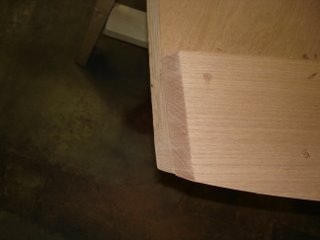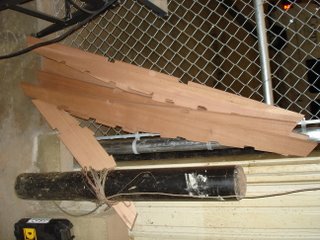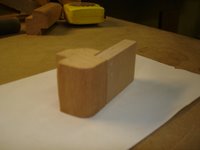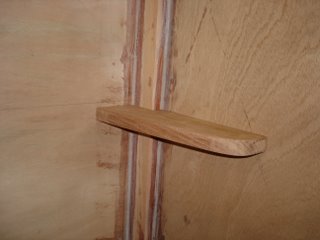
This thing has been an unbelievable help in cutting out panels and other parts. To make it, I got two 24" long sheets of acrylic from Lowes and cut them in half (if an 8' sheet is available that would be better). Screw these along the bottom of a 3/4" straight board, leave one edge flush with one side of the board. Take your circular saw with the blade you want to use the jig with (if you use a blade with a different kerf width than you cut the jig with it wouldn't work as well). Set the saw to 90 degrees and set the edge of the base next to the board, and cut along the length of the board. Rub some wax on it and you're set. Now all you have to do to cut a straight line is line up the cut edge of the jig with the line on your workpiece and clamp the jig down. Works like a charm.




























